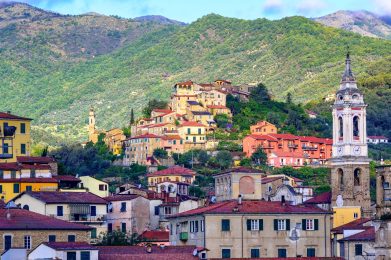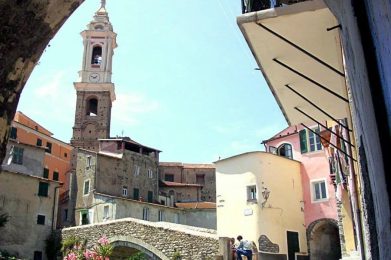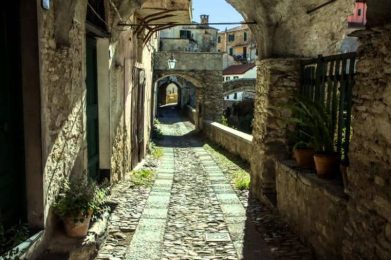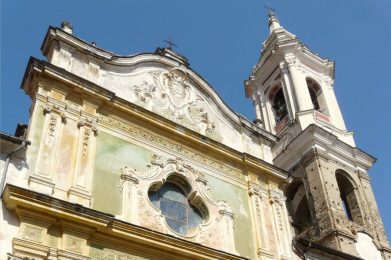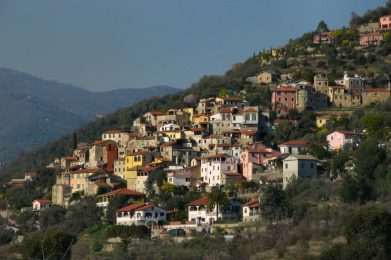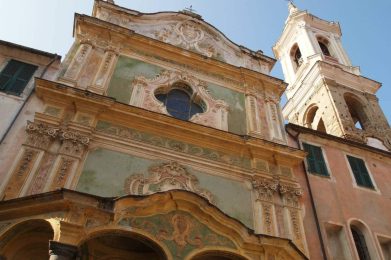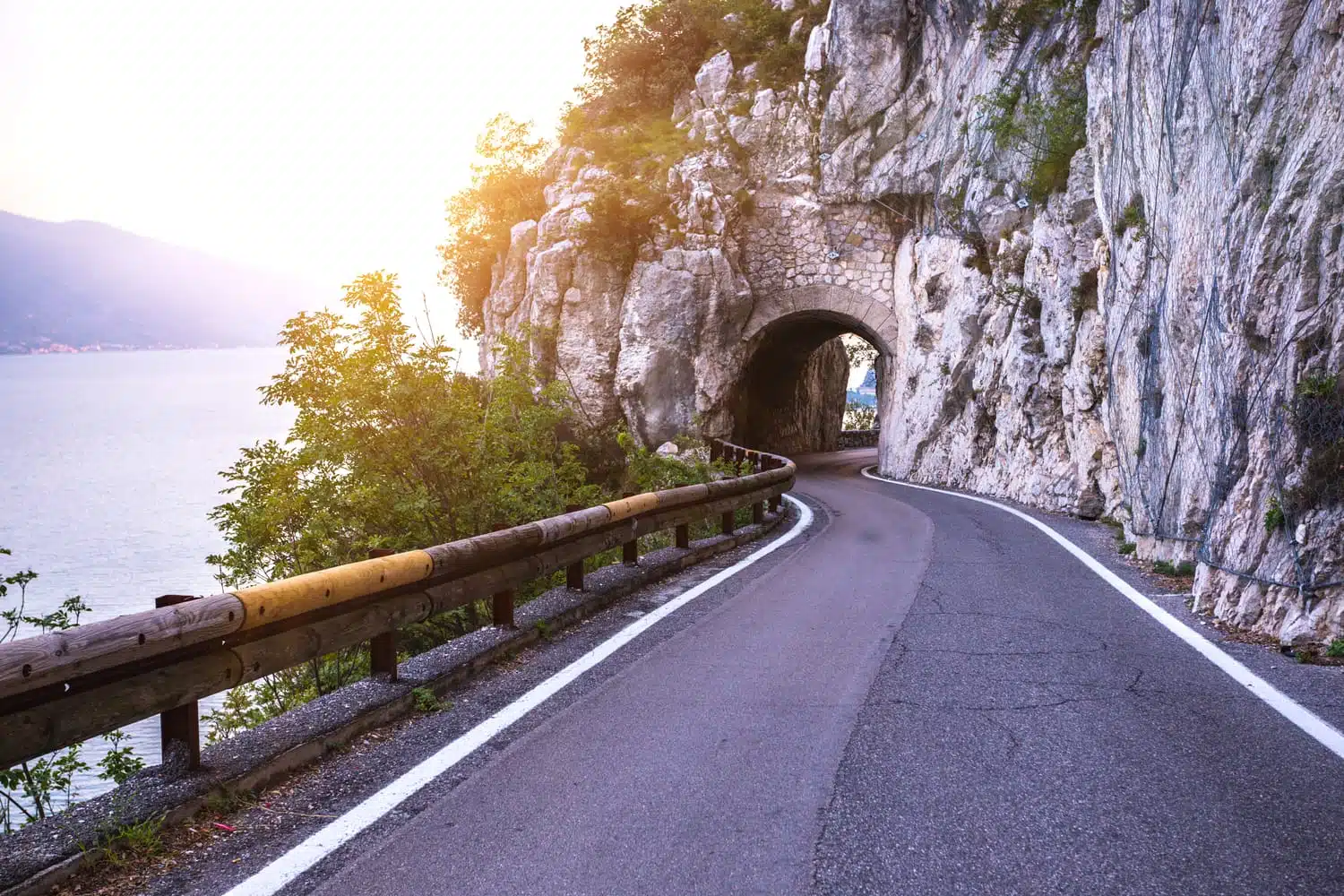A country designed by water and olive trees
The heart of Dolcedo is an intricate maze of alleys, carruggi and stairways that wind around the confluence of the Prino stream and the Rio dei Boschi. Water has always shaped the village's identity, just as oil has forged its economic and cultural soul. Here the olive civilization is expressed in every detail: in the historic olive presses visible under the stone houses, in the dry stone walls that support the terraces, in the ancient lodges where olives were once dried and foodstuffs were measured.
The Municipal Loggia and the signs of the past
An excellent starting point for a visit is the Loggia Comunale, built in 1613 when Dolcedo gained administrative autonomy from the Republic of Genoa. This elegant portico supported by columns was the site of the market and civic confrontation. Today you can still see the ancient marble and iron measures used for oil, wine, cloth and ropes-a small open-air museum of seventeenth-century daily life.
Medieval bridges and waterways
As you descend through the alleys, your gaze opens onto a living postcard: houses overlooking the Prino stream, stone bridges, covered passageways and altane-loggias on the upper floors where food was dried or work in the fields was observed. The solid and graceful Knights of Malta bridge connects the two sides of the village. It was financed, the story goes, by this religious order to facilitate travel to the inland valleys and France.
An ancient agricultural vocation
Dolcedo developed as a road junction between the sea and the mountains, between the Ligurian coast and Piedmont. But it was the cultivation of olives, introduced and spread by the Benedictine monks of Lerino, that transformed the valley. Thanks to the constant presence of water and the construction of mills and olive presses, the village became the hub of the economy of the Prino Valley. Even today, Dolcedo's Taggiasco extra virgin olive oil is among the most renowned in Liguria, appreciated in Italy and abroad.
A historic center to explore step by step
Dolcedo should be discovered slowly, letting its ancient rhythms guide you. Walking along the riverfront, one recognizes the former medieval stores, arches, fountains, and interior courtyards, often embellished with flowers and picture-perfect views. Just outside the center, it is worth visiting the sferisterio, a unique stadium where pallapugno, a traditional Ligurian sport with ancient origins, is still played.
Continuing along the Rio dei Boschi you come to other picturesque rural bridges and the remains of historic oil mills, tangible evidence of the village's rural past.
The visit culminates in the square with the Parish Church of St. Thomas the Apostle, a real architectural surprise. The present church, designed in the 18th century by architect Giovan Battista Marvaldi (the same as the famous Corallini church in Cervo), is a Ligurian Baroque masterpiece. The 15th-century black stone portal, once the original entrance, has been incorporated and enhanced in a richly decorated facade. The interior, with a Greek cross plan, alternates pastel Baroque stuccoes with 19th-century decoration in blue and gold. The canvases housed inside belong to the Genoese school and tell of the village's long spiritual vocation.
Dolcedo between history and identity
Dolcedo's origins date back to the early Middle Ages, when the territory was part of the lands of San Maurizio, later united under Porto Maurizio. In 1238 the village attempted autonomy from Genoa, but the revolt was suppressed and the castle destroyed in 1342. It was not until 1613 that Dolcedo obtained the right to administer itself as a municipality. During the Napoleonic era, in 1810, it was even awarded the title of "town."
Its evolution has always remained linked to nature, religion (with the chapel of Santa Brigida and the Benedictine presence) and historical viability. Today, the old mule tracks, once traveled by farmers and traders, have become beautiful hiking trails or mountain bike routes, among cultivated terraces and gnarled olive trees.
A living, authentic village
Dolcedo is a village that does not show itself all at once, but rewards those who observe it carefully. It is the essence of Western Liguria: lush nature, architecture suspended between the Middle Ages and Baroque, ancient knowledge, and an olive oil that is culture, identity, and gastronomic pleasure. The village's restaurants and local olive presses offer the chance to savor dishes from the early hinterland, simple and authentic, accompanied by the scent of Taggiasco oil and the silence of the valley.
For those seeking a journey between beauty, slowness and authenticity, Dolcedo is a great little treasure to discover.


